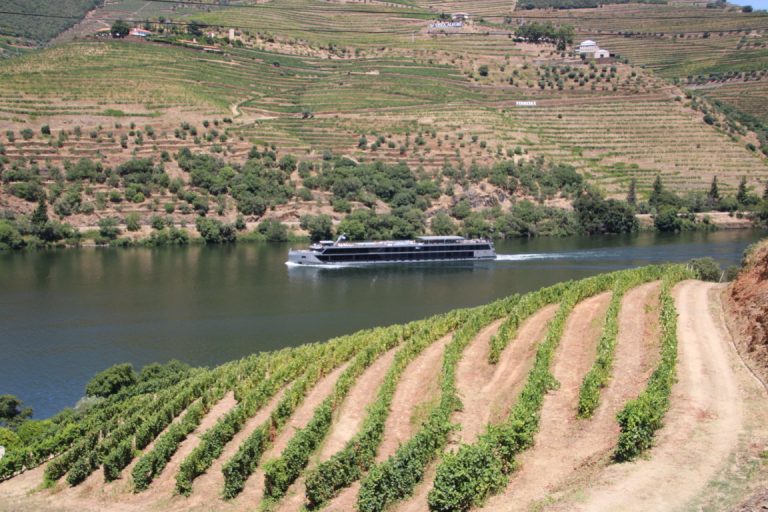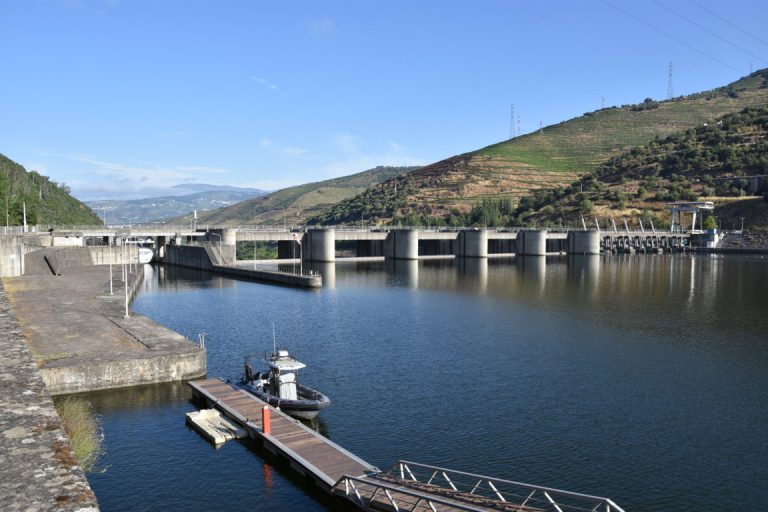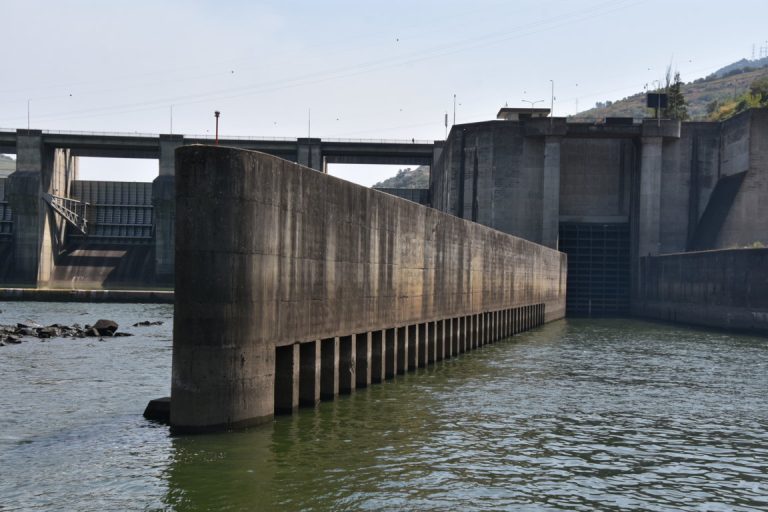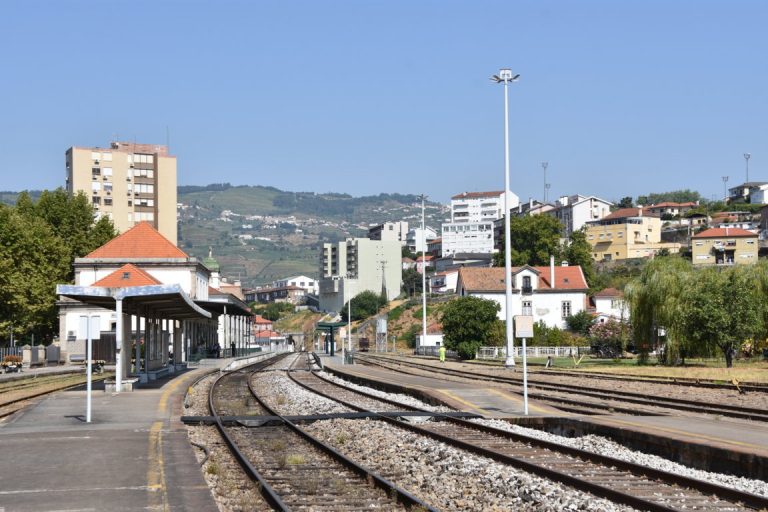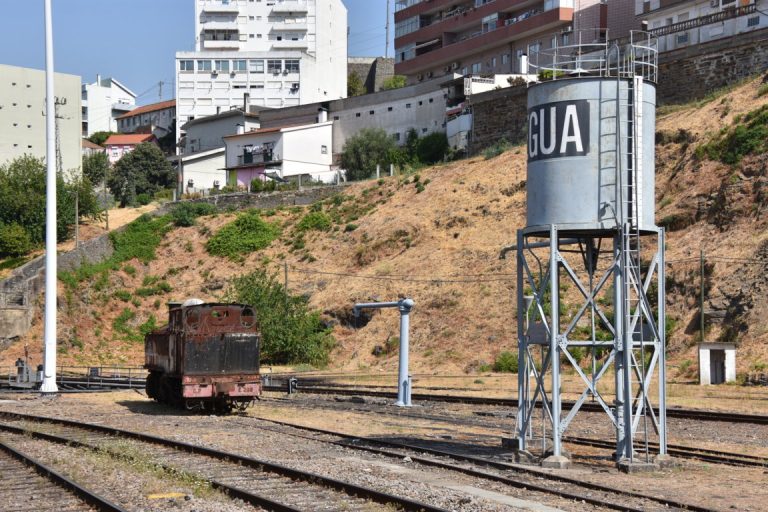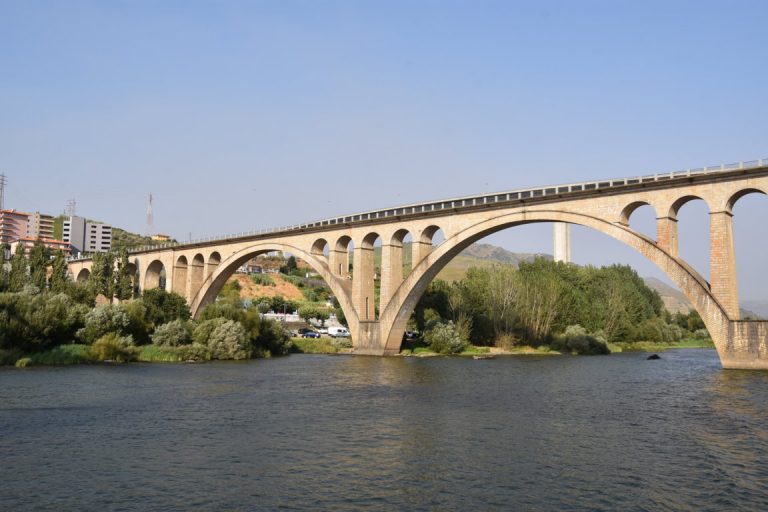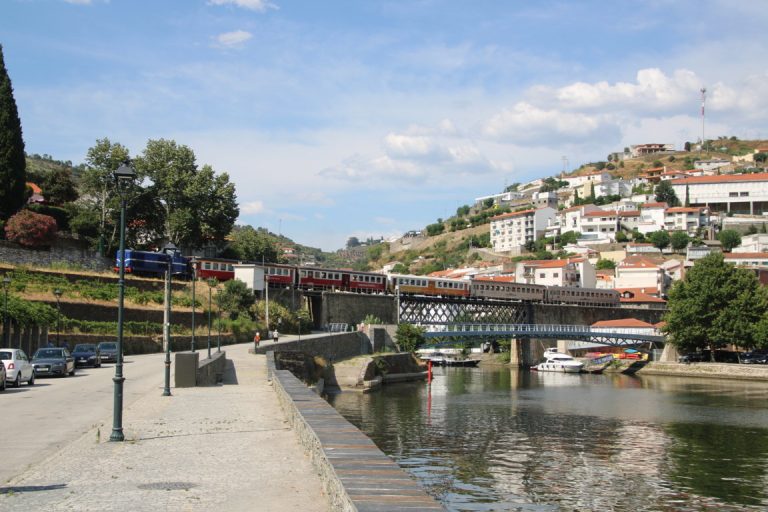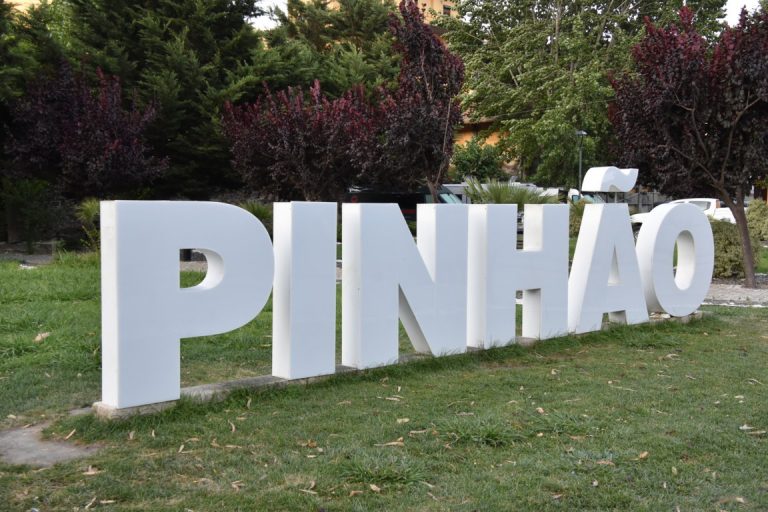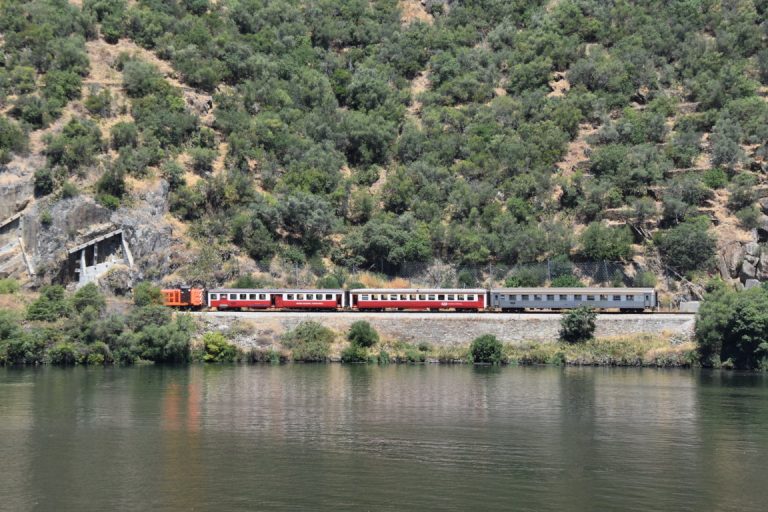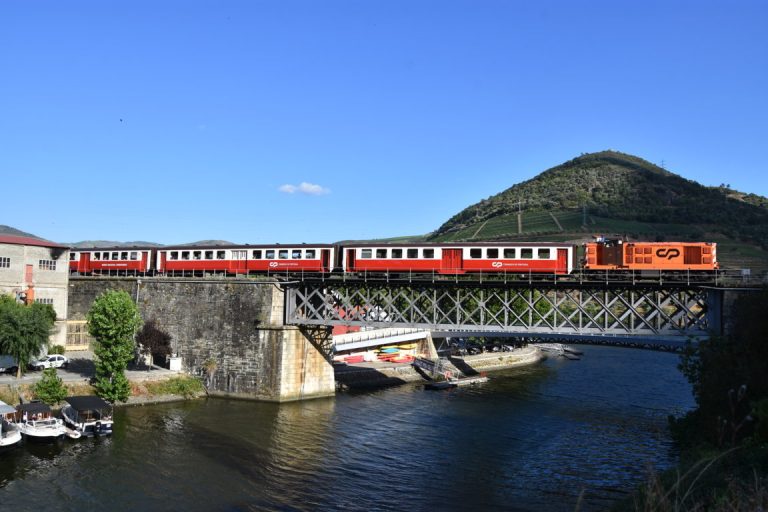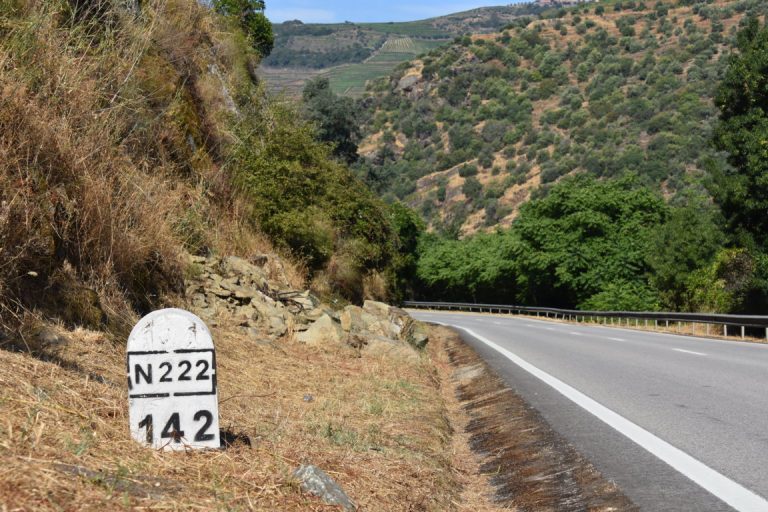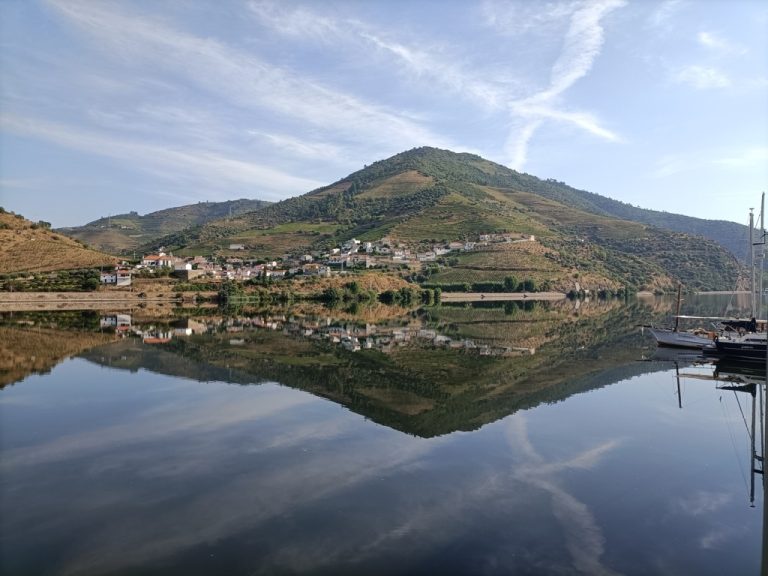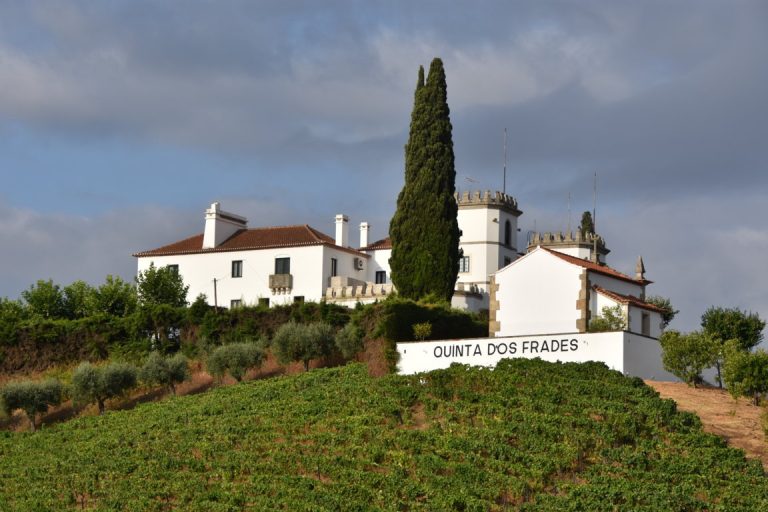Régua and Pinhão: The Heart of the Douro Valley
Nestled among the enchanting landscapes of northern Portugal, Régua and Pinhão represent the soul of the Douro Valley, a region recognized by UNESCO as a World Heritage Site. Steeped in history and natural beauty, these two towns are the birthplace of the renowned Port Wine and the beating heart of Portuguese wine culture.
Régua, considered the capital of the world’s oldest demarcated wine region, rises majestically along the banks of the Douro River, where vineyards stretch across steep terraced slopes, creating a breathtaking landscape. Just a few kilometers away, Pinhão is equally captivating, offering visitors a glimpse into the centuries-old traditions of viticulture: from the picturesque train station adorned with azulejos, to the traditional barcos rabelos once used to transport wine along the river.
Douro Landscapes – Between Régua and Pinhão
Together, Régua and Pinhão offer an unforgettable experience, where visitors can explore historic sites, taste exquisite wines, and immerse themselves in the authentic rhythms of the valley. Whether aboard a scenic train, during a relaxing Douro River cruise, or along the region’s panoramic roads, these two gems reveal the very best of Portugal’s heritage, culture, and natural beauty.
Régua
Peso da Régua, or simply Régua, is a Portuguese town located in the Douro subregion, part of the North Region and the district of Vila Real. Known as the capital of the world’s oldest demarcated wine region, it was established in 1756 by the Marquis of Pombal, minister to King José I, who is also renowned for leading the reconstruction of Lisbon after the 1755 earthquake.
Situated on the right bank of the Douro River, Régua played a crucial role in the production and trade of Port Wine. From here, pipas (wine barrels) were once transported on traditional barcos rabelos down the river to Vila Nova de Gaia, where the wine was aged in historic cellars.
The scenic terraced vineyards of the Douro, a UNESCO World Heritage Site, are true masterpieces: nature’s strength shaped by human hands through effort, passion, and dedication. One of the elements that makes Régua an unmissable destination is precisely its spectacular natural scenery: surrounded by mountains covered in terraced vineyards and bathed by the majestic Douro, it is a place that enchants at every glance.
Tourism is now one of the municipality’s main economic activities, thanks especially to the richnes of its natural resources. The Douro River, navigable from Porto to Régua, is frequented by numerous river cruises that attract thousands of visitors every year.
Régua Dam
Régua Dam
Régua CP Train Station
Régua CP Train Station
For those interested in the region’s history and culture, Peso da Régua offers several fascinating attractions. A must-see is the Douro Museum, which hosts exhibitions dedicated to the history, culture, and traditions of the Douro region — from its geology to the wine production processes. Visitors can also admire the city’s charming architecture, including highlights such as the historic D. Luís I Bridge, the Mother Church of Peso da Régua, and the Cais da Régua. The latter, located along the Douro riverbanks, is a perfect spot to relax, take a stroll, or simply enjoy the view. Today it is one of the main stops for Douro river cruises, but in the past it was also the departure point for the traditional barcos rabelos, loaded with wine barrels destined for the cellars of Vila Nova de Gaia, where the famous Port Wine was aged.
Tourists also have the opportunity to visit two local wineries: Quinta da Devesa and Quinta do Judeu. Starting with Quinta da Devesa, this estate has been part of the Douro’s First Demarcated Wine Region for several decades. Quinta do Judeu is an estate that absolutely deserves a visit — not only for the quality of its wines, but also for the breathtaking landscapes that surround it.
Regua bridge
Pinhão
The village lies on the northern bank of the Douro River and is the heart of the demarcated Port Wine region, home to numerous wineries producing fortified wines. The landscape of Pinhão has been classified by UNESCO as a Cultural World Heritage Site.
Today, Pinhão, with a focus especially on trade and tourism, offers its visitors centuries-old customs and traditions, grape harvests, traditional wine cellars, local crafts, and above all, the famous terraced vineyards of the Douro. One of the village’s most prized landmarks is the Train Station (CP), adorned with azulejos dating back to 1937—one of the most beautiful in Portugal. It features 24 panels with winemaking motifs, illustrating scenes from grape pressing to the transport of wine in rabelo boats down the river to the cellars of Vila Nova de Gaia.
Visitors arriving in Pinhão have the opportunity to admire the road bridge over the Douro River, designed by Gustave Eiffel in the 19th century, the metal railway bridge over the Pinhão River, the Mother Church, the Cruzeiro, an excursion aboard a replica of a traditional Barco Rabelo, old noble manor houses, quintas that can be visited with off-road vehicles, and most of all, the breathtaking landscapes of the Douro, perfect for seasonal visits, especially during the grape harvest and pressing periods.
Pinhao
Pinhao
Historic Train
The Douro railway line connects Porto to Barca d’Alva and follows the course of the Douro River for approximately 200 kilometers. Along the way, travelers can admire the stunning views of the Douro, declared a UNESCO World Heritage Site.
One of the best ways to enjoy the river landscape, especially along the stretch between Peso da Régua and the village of Pinhão, is without a doubt the Historic Train: a steam locomotive and five vintage carriages recreate a unique journey into the region’s historic past. At Pinhão Station, visitors can witness the steam locomotive—built in 1925—being refilled with water and admire the station itself, considered the most beautiful in the Douro region, with its tile panels depicting scenes from the grape harvest and winemaking life.
Tourist train running along the banks of the Douro
Tourist train running along the banks of the Douro
Estrada Nacional 222
Another way to admire the landscapes between Peso da Régua and Vila do Pinhão is by driving along the famous Estrada Nacional 222 (EN 222). The EN 222 is a national road that is part of the Portuguese road network and connects Vila Nova de Gaia to Almendra (Vila Nova de Foz Côa), following the left bank of the Douro River. This unique route connects three UNESCO World Heritage destinations: Porto’s Ribeira, the Alto Douro Wine Region, and the rock engravings of Foz Côa.
In 2015, the stretch of the EN 222 between Peso da Régua and Vila do Pinhão was declared the “World’s Best Driving Road” due to its extraordinary scenic variety. This route links Peso da Régua to Vila do Pinhão, with the Douro River ever-present along the way and the characteristic terraced vineyards lining the hills.
ESTRADA NACIONAL n222
Daily Cruises between Régua and Pinhão
A fantastic alternative for sailing enthusiasts is the traditional daily cruises between the port of Peso da Régua and Vila do Pinhão. These excursions offer the opportunity to explore the rich landscape of the Alto Douro Wine Region, admiring the local beauty, the iconic terraced vineyards of the Douro, the Douro culture, and delicious traditional gastronomy. During the journey, travelers also experience passing through the Régua Dam lock, which has a height difference of approximately 27 meters. The cruises cross the navigable lock while moving between the town of Régua and the village of Pinhão.
At the port of Vila do Pinhão, travelers can enjoy a river tour to the mouth of the Tua River aboard a traditional Barco Rabelo, taking in the most impressive views of the Douro region, a UNESCO World Heritage Site. Here, visitors can observe the famous wine-producing quintas and the terraced vineyards cascading down to the river. This stretch of the Douro River is not visible from the national roads.
Douro landscapes – between Régua and Pinhão
Landscapes and terraced vineyards along the Douro River between Régua and Pinhão
Régua and Pinhão are two destinations that capture the essence of the Douro Valley, offering a journey through time where wine tradition blends with the majesty of nature. The breathtaking scenery, with vineyards stretching across steep terraces, and the tranquil waters of the Douro create the perfect setting for a unique experience that goes far beyond conventional tourism.
Whether exploring the region’s rich cultural heritage, visiting historic quintas, or simply admiring the view from a cruise or the famous historic train, every moment spent in these places offers a chance for a deep connection with the history and culture of the region.
Régua and Pinhão are not just points on a map, but destinations that touch the soul, leaving lasting memories for those who venture through their streets, trails, and vineyards. Here, the magic of the Douro reveals itself in every detail, inviting all to discover the beating heart of Portugal.
Don’t miss news, updates, and reviews from the world of cruising on Cruising Journal.

